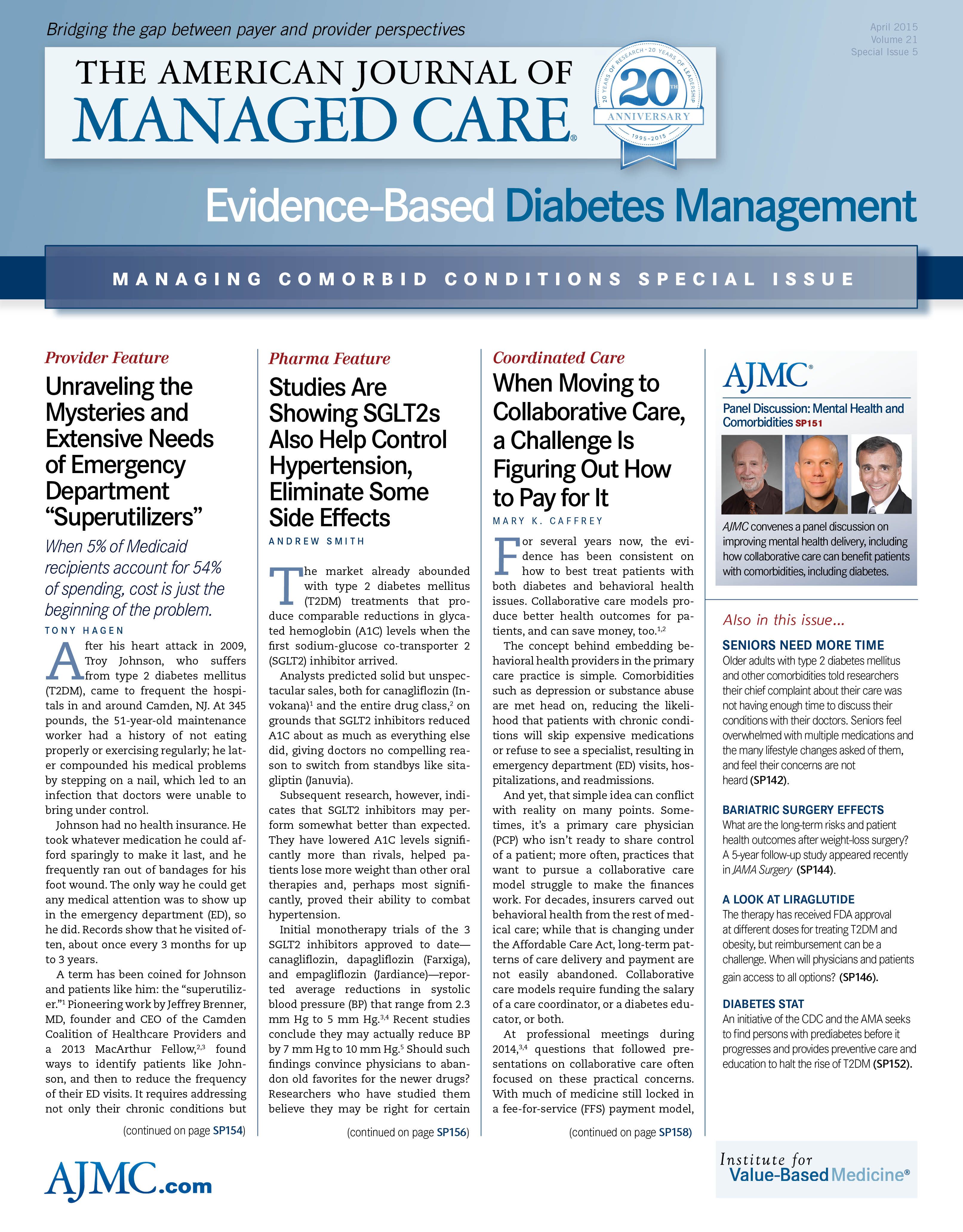- Center on Health Equity & Access
- Clinical
- Health Care Cost
- Health Care Delivery
- Insurance
- Policy
- Technology
- Value-Based Care
Implementing JNC 8 Guidelines Is Generally Cost-Effective, According to NEJM Findings
The argument for cost-effectiveness has become important in the care of patients with diabetes and other comorbidities, as patients typically take multiple medications, each with its own cost-both to the payer and to the patient in the form of a co-pay-as well as some side effects.
A year ago, the 2014 recommendations of the Eighth Joint National Committee (JNC 8) received plenty of attention, as they called for 3 key changes from the 2003 guidelines1,2:
• For adults less than 60 years of age, without diabetes or chronic kidney disease (CKD), the diastolic blood pressure treatment goal should be <90 mm Hg.
• For adults 60 years or older, without diabetes or CKD, the systolic blood pressure goal should be <150 mm Hg and the diastolic goal should be <90 mm Hg.
• For all adults with diabetes or CKD, the systolic blood pressure goal should be <140 mm Hg and the diastolic goal should be <90 mm Hg.
Data reported in the Journal of the American Medical Association suggested that these relaxed guidelines would mean that 1% of adults aged 18 to 59 years and 8% of adults 60 years and older would no longer be eligible for blood pressure therapy. However, that would still leave 28 million adults in the United States with uncontrolled blood pressure.3
Should all these potential patients be treated? Specifi cally, is treating these individuals worth the cost? That second question was addressed in a January 2015 article in the New England Journal of Medicine, “Cost-effectiveness of hypertension therapy according to 2014 guidelines.”2
In the article, authors led by Andrew E. Moran, MD, MPH, write that their purpose is to address a challenge posed by the American College of Cardiology and the American Heart Association, which called for the inclusion of cost-effectiveness analyses and recommendations in practice guidelines. The authors used the Cardiovascular Disease Policy Model to calculate the cost of hypertension monitoring and treatment, the costs averted with treating cardiovascular disease (CVD), and quality-adjusted life-years (QALYs) for adults between the ages of 35 and 74 years for a 10-year period through 2024. Cost-effectiveness was assessed based on age and hypertension level, and whether the patient had comorbidities of CKD or diabetes. Cost-effectiveness was de ned as $50,000 per QALY.
The argument for cost-effectiveness has become important in the care of patients with diabetes and other comorbidities, as patients typically take multiple medications, each with its own cost—both to the payer and to the patient in the form of a co-pay—as well as some side effects. Finding the right balance of cost, achievement such targets as blood pressure and glycated hemoglobin, side effects, and overall health can vary from patient to patient, despite the movement toward quality measures based on population health.4
In that context, the NEJM article reports several important findings:
• Full implementation of the JNC 8 guidelines for hypertension would result in approximately 56,000 fewer cardiovascular events and 13,000 fewer deaths.2
• Projections show that treating patients with existing CVD or stage 2 hypertension would save lives and produce cost savings for men between the ages 35 and 74 years, and for women between the ages of 45 and 74 years. Treating men or women with hypertension but without CVD would remain a cost-saving even if strategies to increase medication adherence doubled treatment costs.
• Treatment of stage 1 hypertension was cost-effective for all men and for women between the ages of 45 and 74 years; however, treating women with stage 1 hypertension without CVD had intermediate or low cost-effectiveness.
The authors write that more frequent offi ce visits, home blood pressure monitoring, pharmacist involvement, or interventions to ensure medication adherence all add value, “even if they require
an additional annual investment of up to $1230 per patient in men with CVD, $600 in men with stage 2 hypertension without CVD, and $650 in women with CVD.”2
Of note, the authors project that achieving the modi ed treatment goals of 150/90 mm Hg for patients between 60 and 74 years of age would be cost-effective even if a higher rate of medication
side effects were assumed. However, they offer the caveat that these older patients have varying degrees of functionality, and patient-by-patient decisions must be made for this reason. “Better predictors of adverse effects of medications are needed to guide the decision to withhold or withdraw treatment from individual patients in this group,” they write.2
The authors note their study does not consider the synergistic effects of modifying diet or exercise, or the relative merits of different classes of hypertensive medication.
REFERENCES
1. Page MR. The JNC 8 hypertension guidelines: an in-depth guide. Am J Manag Care. 2014;20(SP1)SP5-SP6.
2. Moran AE, Odden MC, Thanataveerat A, et al. Cost-effectiveness of hypertension therapy according to 2014 guidelines. N Engl J Med. 2015;372:447-455.
3. Navar-Boggan AM, Pencina MJ, Williams K, Sniderman AD, Peterson ED. Proportion of US adults potentially affected by the 2014 hypertension guidelines. JAMA. 2014;311:1424-1429.
4. Caffrey MK. A look beyond findings on telephone intervention reveals why having data matters. Am J Manag Care. 2015;21(SP2):SP45.


